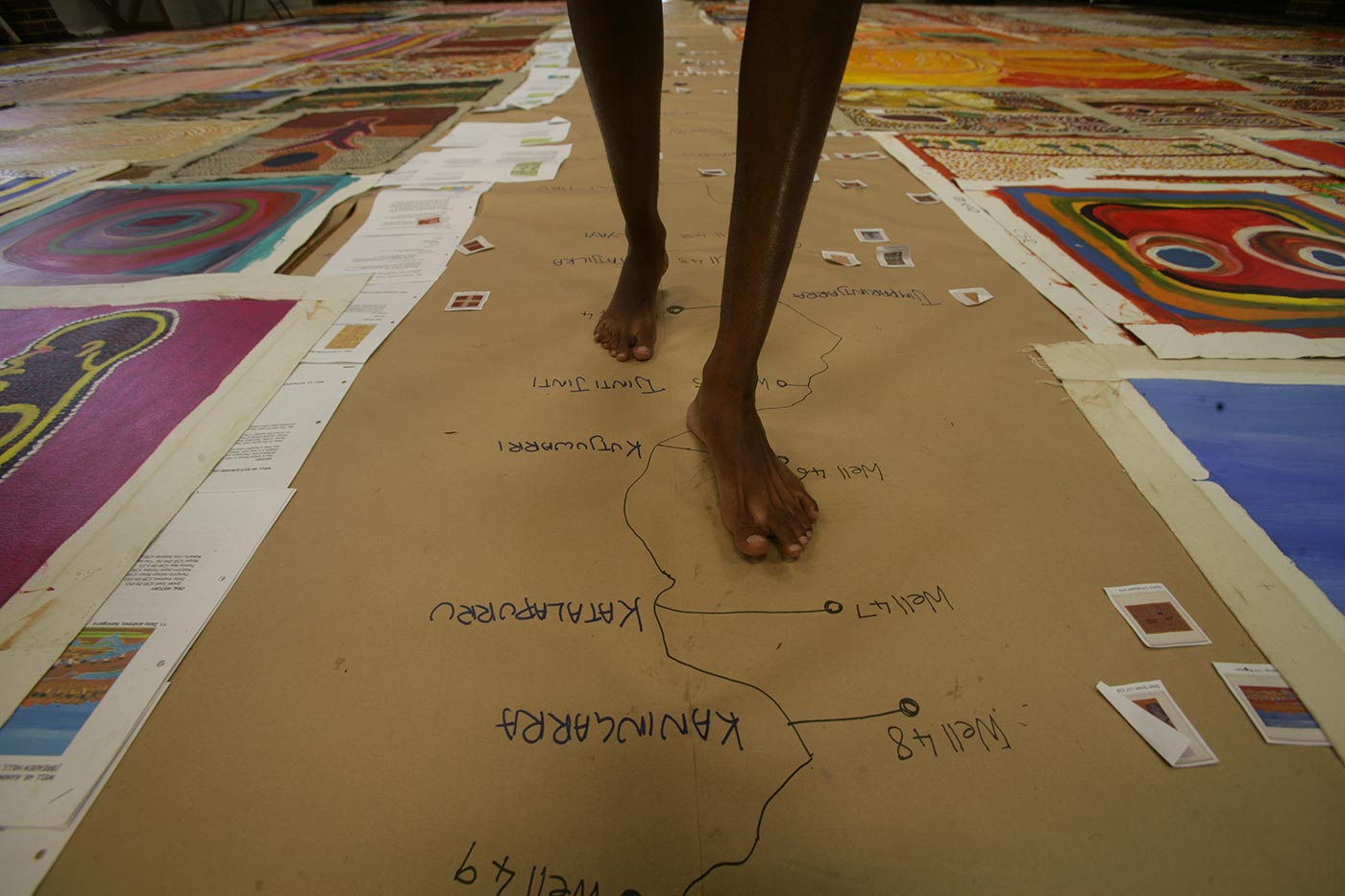Drawing a line in the sand: The Canning Stock Route and contemporary art (part four)
Lloyd Kwilla, Wangkatjungka, 2009:
Well, people felt empty when he was gone. They can't come back. They moved away. Animals moved away. People, animals, they're connected. When they took that snake out, they made that place out of balance.
The contemporary art of the Western Desert draws back the curtain of Alfred Canning's map, revealing the bright desert world over which it was drawn.
The paintings of the Canning Stock Route collection attest to the abundance of meanings that artists draw from and ascribe to their homelands. They re-map, or perhaps rather unmap the desert terrain to which Canning's map laid claim.
These paintings are not, individually, maps in a Western sense. But collectively they emerge as a kind of map: not a map for orienting oneself in the landscape, but for re-orienting oneself in history.
It is in the relationships between works of art, between artists, between art and history, and between history and Jukurrpa that these paintings tell another story. To move among them, on the page or in an exhibition space, is to be pulled away from the line of the stock route and the history books back into the story of the Country.
The Canning Stock Route collection is not a summary of the past 100 years, but a vibrant assertion of the many thousands of years of cultural continuity in the light of which our shared history needs to be understood.
In the end, the stock route is little more than a line on a whitefella map, but as a story it allows us to draw into focus the broader and less easily harnessed histories of many Aboriginal peoples.
Like the road from which it draws its name, the Canning Stock Route collection is many things; and ultimately it is not really about that road at all, but rather about a far bigger and more important story that is only beginning to be told about Australia today.
Drawing a line in the sand:
You may also like
